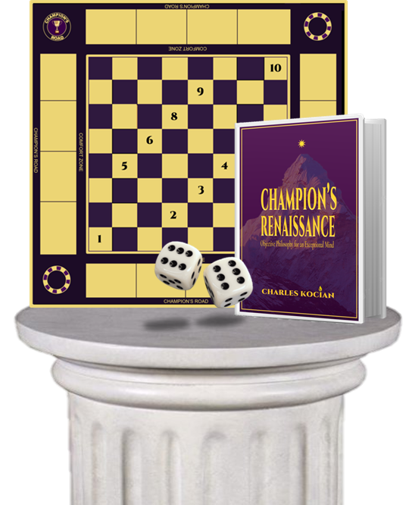
(Answer at the end).
LOGIC
By Charles Kocian
Recently Twitter has retired its famous bird logo and replace it with an X. This reflects Elon Musk’s vision to turn the platform into an “everything app.” The meaning of “X”, he said, was to “embody the imperfections in us all that make us unique.” All logos and names generally represent the values of it.

X is the new logo of Twitter.
Something similar happened in Florence, a whole city whose architecture change from the Middle Age to the Renaissance. From Brunelleschi and Michelangelo to Leonardo da Vinci, the Catholic Church, who was the main global institution in those days, saw a change in the arts, that acted like a sort of a new social logo, something that happened in all Europe, but especially in Florence, with its new arts and sculptures. The nude David sculpture of Michelangelo, still today in Florence, is perhaps the main city-omnipresence logo of the Renaissance.

David by Michelangelo, Florence, Italy.
But it was not only arts and the sculpture of the naked human body that was resuscitating, it was man’s essence, that what makes man a man and no other thing: reason. In the last post we said that reason is the information man brain receives from the material world through its senses, and the process of identification and integration the brain does with this information, starting with percepts, then to concepts. Galileo did the same using its telescope, (as a more powerful eye sensor), and accordingly to evidence from its telescope and logic, he demonstrated that the Earth was moving around the Sun.
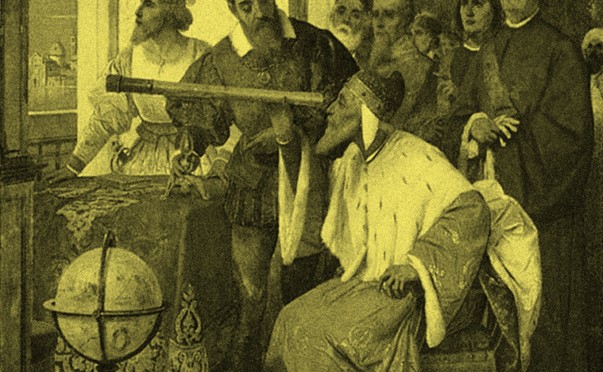
Galileo showing its telescope.
Like all living animals, before learning to speak, man perceives the objects of its space environment through some kind of senses. The information provided by man’s five senses are all integrated and don’t contradict each other, for instance, what you see matches what you hear. But although man perceives the world like the other animals, through its sensory organs of perception, he is the only animal that has created a written language to communicate and think. It is the written language that allows man to think with concepts. One of the oldest known languages is the cuneiform language of the Sumerians.

Sumerian Cuneiform writing in stone.
Before using words, a human baby is aware of its surroundings, automatically through its sensory perceptions, that is, through “percepts”. Percepts are visual representations in a man’s baby brain, of the “things” or “objects” that exists in its physical space surroundings. They are not words but visual representations in a flat surface, (kind of draws in a Euclidean space in the screen of its mind), of the real objects that surrounds its physical space. Like all other animals, man’s body does this automatically. But when the child learns to speak and write, he learns an alphabet. With an alphabet he can give names to represent those percepts that already exists in its brain that has formed automatically.
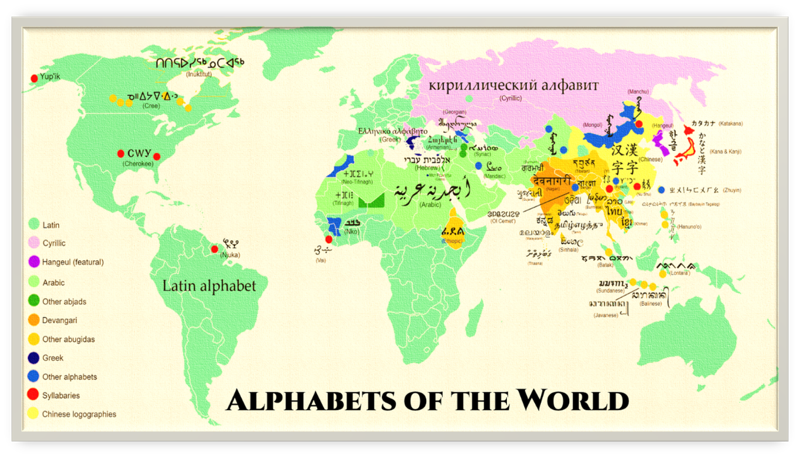
But to learn the alphabet of any language is not automatic. It is the result of a deliberate, voluntary decision to make the effort to do it. To learn the rules of grammar is difficult. To learn to write and speak well is difficult and a voluntary decision that takes time. Therefore, to use concepts properly is an individual decision. Only proper concepts allow consonance with percepts, because, when concepts don’t derive from percepts, language itself becomes a tool of cognitive dissonance with its devastating psychological and cultural consequences.
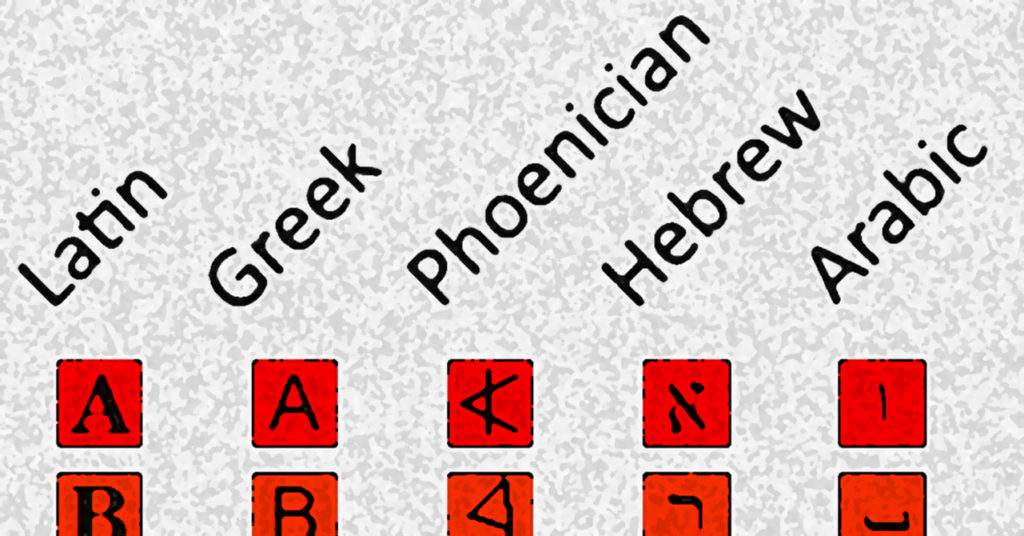
But if man use the proper concepts connected to percepts, that is still not enough to think properly, and here is when logic came to stage. To think properly, man must use logic. Logic is a syllogism of two affirmations, each constructed by a subject and predicate. The most common example is: 1) Socrates is a man, 2) All man is mortal. Conclusion: Socrates is mortal.

This simple example explains Aristotle’s classical logic which is enough to think without contradictions. It is based on the principles that all propositions must either affirm or deny something. Every proposition must be either an affirmation or a negation; it cannot be both. He also points out that propositions can make claims about what necessarily is the case, about what possibly is the case, or even about what is impossible.
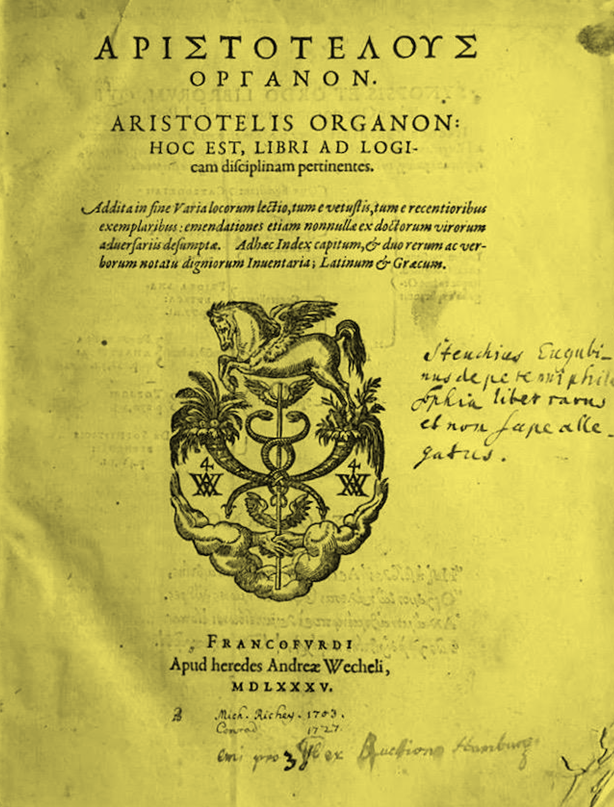
The Organon, where Aristotle defined logic.
The word “logic” has its origins in the Greek “logike”, meaning “thought” or “pertaining to thought.” It was first coined by Zeno the Stoic. Aristotle considered logic as the “organon” or the tool or instrument of the sciences. All its Greek variants, like ‘logik’, ‘logike’, ‘logika’ or ‘logica’ derived from “logikós” which means “in relation to reason or reasoning, rational, reasonable.”

The above are the man that has contributed to logic. From left to right, we see Aristotle, (father of classic logic), then Avicenna, (who replaced Aristotelian logic in Islamic discourse), then William of Ockham, (a major figure of medieval scholarly thought), and finally the cove of the book Principia Mathematica, (written by Alfred North Whitehead and Bertrand Russell), that had a large impact on modern logic.
CONCLUSION
To survive, all animals are aware of its surrounding by their sensory perceptions. They know, without words, that every effect has a cause. Some “X” can be a dangerous predator. Some other “X” can be a friendly mate. Man shares this faculty with animals, but only man has the rational faculty, that is, its ability to think using concepts. In the animal kingdom, man is the only intellectual. In its intellectual activity, man need to use concepts and logic properly, not only to prosper economically, but especially to achieve real happiness, that is, eudaimonia. Eudaimonia is achieved when its intellectual happiness commands its animal happiness. Eudaimonia is the high-end happiness of a good rider of a good horse. In the game we have created, this is the moment when the player takes the opportunity to crown its reason as king or queen of its mind.
Now answer to question 62.
QUESTION N° 62
Logic, is the art of definitions?
a) Yes.
b) No.
The answer is: b) No. Logic is the science of non-contradictions. But the conclusion of a syllogism, although logically right, it can be factually wrong if it contains floating concepts.
Leave your comments here.
